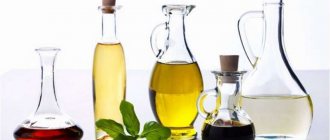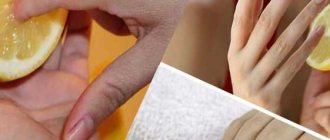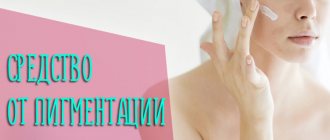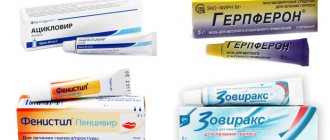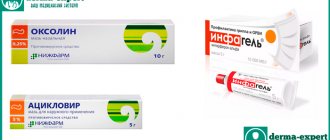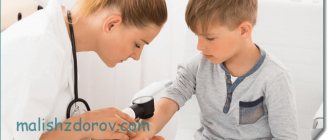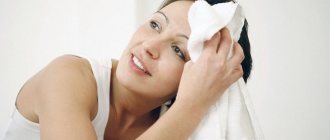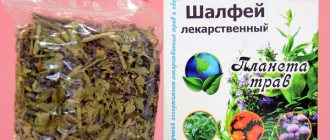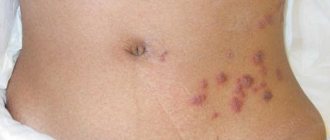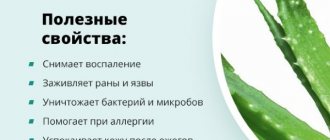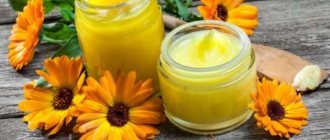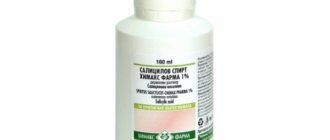Causes of pityriasis rosea in a child
The possibility of pityriasis rosea in infants is due to weak immunity, which is just being formed, but these cases are quite rare; school-age children and teenagers are more often susceptible to pityriasis rosea.
The exact cause of pityriasis rosea has not been identified, but there are several reasons that increase the risk of this disease:
- A sharp decrease in immunity - may be due to recent vaccination, the presence of chronic diseases, constant use of medications, frequent colds, the autumn - spring period, at this time the body's defenses in children decrease;
- Allergic reaction - for example, during the introduction of the first complementary foods, wearing things made of synthetic fabrics, taking medications that often cause allergies in infants;
- High emotional or physical stress, frequent stress;
- Hypothermia;
- Overheat;
- Frequent injuries that disrupt the barrier functions of the skin;
- Using rough washcloths or aggressive hygiene detergents.
Pityriasis rosea in adolescent children can be caused by herpes viruses type 6 and 7, and in infants the presence of streptococcus, these pathogens can cause allergies, which will manifest as red spots.
Pityriasis rosea is considered not an infectious disease, but in medical practice there are precedents when the whole family was exposed to this type of lichen, perhaps due to the fact that bedbugs and ticks can be carriers of this infection.
Find out more
Symptoms of pityriasis rosea in a child
You can see the signs of lichen deprivation in children in the photo section.
Pityriasis rosea is characterized by a clear clinical picture, but develops in stages:
- Pre-initial stage - General deterioration in condition, body aches, sometimes swollen lymph nodes, joint pain, in some cases increased body temperature and decreased appetite, can be confused with the onset of the flu, but in addition to these symptoms you can add numbness or tingling of the skin in which the first outbreak will appear in the future.
- Initial stage - Formation of a “maternal” plaque (a round-shaped spot, has a scarlet tint, up to 10 centimeters in size, is covered with small scales, has a small depression in the middle, which has a lighter color) is localized on the upper part of the body - on the shoulders, shoulder blades or chest.
- Second stage - A week after the appearance of the “maternal” plaque, numerous rashes appear on the body, which diverge and can be localized throughout the body, often along the “Langer lines” (conventional lines indicating the direction of skin tension), but including the hands, feet and hair. They have different sizes, the lesions can be from 1 to 4 centimeters. The lesions are pink and peel, causing the skin to become dry and itchy.
- Final stage - Due to the rejection of the scales, white spots remain in place of the previous lesions, the scarlet edges of the affected areas change their color, becoming lighter.
Pityriasis rosea goes away completely within 2 to 4 weeks, and traces of spots disappear completely after another 5 weeks.
Pityriasis rosea in infants may appear without the formation of a “maternal” plaque, being located more on the face (cheeks).
There are atypical forms of the disease, in which small pimples, nodules and ulcers may occur, this depends on the characteristics of the body, treatment will take longer.
Diagnosis of pityriasis rosea in a child
Before starting treatment for pityriasis rosea, it is important to make a correct diagnosis. If you notice red spots on your child's skin that are flaky and accompanied by itching, you should visit your pediatrician and he will give you a referral to a dermatologist.
Basically, a simple examination is enough for the doctor, but in addition he can perform dermatoscopy (a non-invasive research method using a tenfold magnification of the problem area).
In very rare cases, for example, if the affected area is scratched, a secondary infection has developed and scraping (sampling of epithelial particles for histological analysis) may be required.
Laboratory tests will also be taken - a general blood and urine test.
It is very important to visit a doctor, because pityriasis rosea can be externally confused with diseases such as rubella, which is also common in babies, or different types of dermatitis - which have similar symptoms.
Symptoms and signs
The clinical picture of the pathology is as follows:
- Some time after infection, the child may feel slight weakness and loss of appetite . In some cases, hyperthermia occurs, although this symptom is not mandatory.
- In some cases, the child feels discomfort in the joint area.
- Cervical lymph nodes may become enlarged.
- After some time, a specific spot appears on the child’s skin in the form of a pink plaque . This spot is considered the maternal spot; its size can be quite significant, 2-5 cm in diameter. Shape: round or oval.
- After some time, the affected surface begins to peel off , and the child complains of severe itching.
- After a few days, new affected areas appear on the child’s body; the rash can spread to the entire body , however, it is most often localized where the skin is thinnest and has a large number of sebaceous glands.
- The spots become covered with specific scales , their surface becomes denser and rougher, and small cracks may appear, which cause pain to the child.
Localization of rashes
Most often, specific spots appear in children in the scalp, back, abdomen, limbs, and shoulders .
Treatment of pityriasis rosea in a child
Due to the factors in the development of pityriasis rosea, it does not require any special treatment.
Often this is a symptomatic treatment, that is, when the temperature rises, antipyretic drugs are indicated, because of severe itching that causes severe discomfort, anti-allergic drugs are prescribed.
If a child’s lichen occurs due to frequent colds, the doctor will recommend taking a complex of vitamins, and if the temperature rises, a course of antibiotics.
In cases where lichen causes severe discomfort due to itching, anti-inflammatory ointments are indicated.
Pityriasis rosea in an infant caused by allergies should not be treated only by taking antihistamines; it is much more important to remove the allergen completely and replace medications with hypoallergenic ones.
Sorbent preparations are also indicated to remove accumulated allergen from the body; skin manifestations will go away faster. During the course of the disease, replace all detergents with a suitable pH level for the baby.
Due to the very young age of patients, some medications may be contraindicated, then folk remedies can come to the rescue, but all of them must be discussed with the attending physician!
They help reduce the feeling of itching and will help the main treatment, but should be used with caution.
Treatment methods
How and with what to treat the baby? Often the disease goes away on its own, without the use of any therapeutic agents, however, to achieve a faster and more effective result, a dermatologist may prescribe special treatment .
First of all, the following rules must be observed:
- Eliminate foods from your diet that can trigger an allergic reaction.
- A child's underwear must be changed daily . Preference should be given to clothing made from natural soft fabrics.
- If pityriasis rosea occurs in a very young child, it is not recommended to use disposable diapers, which impede air access to the skin.
- It is important to observe the rules of personal hygiene . It is necessary to wash the child daily, without using soap or washcloths. For water treatments, it is best to use a shower. A child suffering from pityriasis rosea should not take a bath. When drying your baby, use soft towels. Do not make sudden rubbing movements; you can only lightly blot the skin.
- physical activity should be kept to a minimum to prevent excessive sweating, as sweat can irritate damaged skin.
- Do not overexpose your skin to sunlight until the spots disappear completely.
- It is important to provide the child with emotional peace and protect him from stress and anxiety .
Synthetic, woolen products, which can irritate and rub the baby’s delicate skin, are not recommended.
Medication
Drugs used to treat pityriasis rosea in a child can eliminate itching, inflammation, irritation, and speed up the process of skin regeneration and cleansing. for therapeutic purposes :
- sorbents for detoxifying the body (for example, Polysorb);
- antihistamines to relieve itching and irritation (Suprastin, Loratadine);
- antiseptics help prevent secondary infection and the spread of inflammation (Skin Cap);
- vitamin complexes for general strengthening of the body;
- ointments for external use accelerate the healing processes of the skin (Elocom).
Traditional medicine
Traditional recipes that must be used in addition to drug therapy prescribed by a doctor can also cope with the symptoms and manifestations of the disease:
- Vaseline ointment. Dried calendula flowers are added to Vaseline in a ratio of 5:1. The mixture is infused for 2-3 days, after which the resulting composition is applied to the affected areas of the skin 2 times a day;
- chamomile flower tea is used internally or in the form of compresses;
- cabbage compress. A white cabbage leaf is mashed to release the juice. After this, a fermented milk product, for example, kefir, is applied to it, applied to the affected skin, and fixed with a gauze bandage.
Treatment of pink lichen in a child with folk remedies
Let's consider several methods (you should not apply the tips given without consulting a doctor):
- Herbal decoctions - you can buy herbal infusions at the pharmacy, often calendula, celandine and birch buds. These herbs have an antiseptic and anti-inflammatory effect. They are used as lotions or added while taking a bath.
- There are many methods using acetic acid, garlic or menthol; you should be careful with such recipes because they can cause pain and leave burns.
- You can also use oils of various herbs, it is highly undesirable to follow these tips, the skin on which the oils are applied does not allow oxygen to pass through, inflammation may begin and will only worsen the situation.
- And the use of ashes from newspaper sheets is fraught with the addition of infections.
Be careful about traditional medicine.
There are alternative treatments, but they should be complementary and not the primary treatment:
- Using clothing made from natural fabrics (which will eliminate the possibility of allergies to synthetic fabrics);
- A properly selected diet that excludes allergens;
- Carry out general cleaning, paying special attention to carpets or large soft toys (they may contain ticks that can be a source of infection);
- Iron all of the child's underwear and bedding.
After complete recovery, relapses do not occur. A child who has had pityriasis rosea develops immunity to this disease.
Diagnostics
To make a diagnosis, in most cases, it is enough for the doctor to evaluate the clinical manifestations of the disease, however, if the pathology has a protracted course, other research methods are also used.
These include, first of all, skin tests for differential diagnosis. It is necessary to exclude diseases such as parapsoriasis, syphilis, and fungal infections .
What is scrofula in a child behind the ears? Find out the answer right now.
Prevention of pityriasis rosea in children
For a speedy recovery or to prevent infection, you should follow a few simple rules that will help you avoid not only pityriasis rosea, but also other unpleasant skin diseases:
- From an early age, instill in children a culture of personal hygiene; all household members should have their own personal hygiene items - elastic bands, combs, slippers, towels, etc.;
- Strengthen the child's immunity - by hardening, maintaining a healthy lifestyle, taking vitamins, especially in the autumn - spring period, for children who are susceptible to frequent respiratory diseases and visiting institutions with a large number of people
- Avoid hypothermia and overheating
- Avoid allergens
- Strengthen the nervous system, especially for adolescent children, due to possible strong mental or emotional stress
- Avoid prolonged exposure to sunlight, sweat getting on the lesions can cause even more severe itching and contribute to the appearance of new spots
- Do not use ointments, lotions, creams containing sulfur or tar; these components dry the skin, causing additional discomfort, and also limit the removal of toxins.
Even if you have classic symptoms, do not self-medicate, trust your doctor, then the treatment will be effective and the disease will go away faster.
